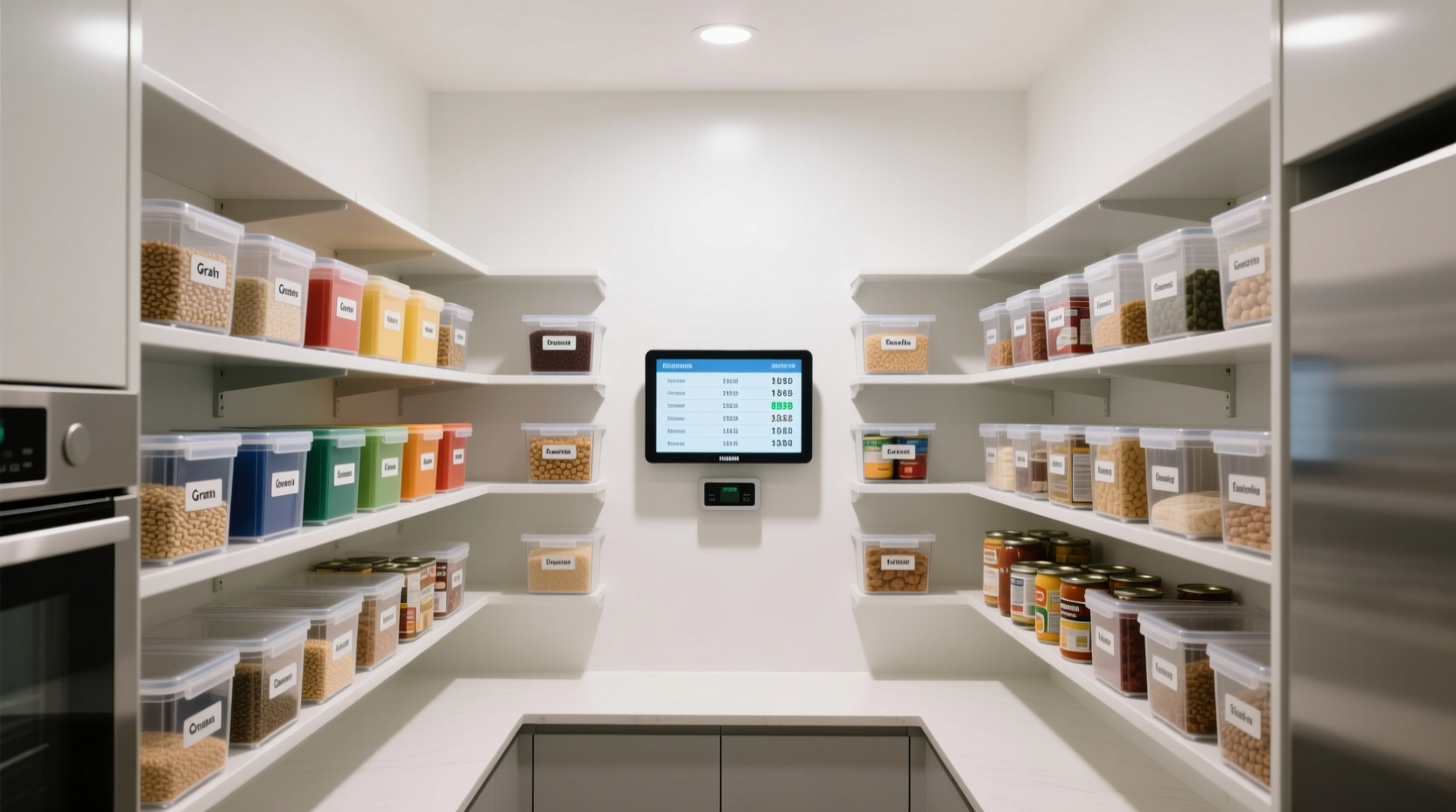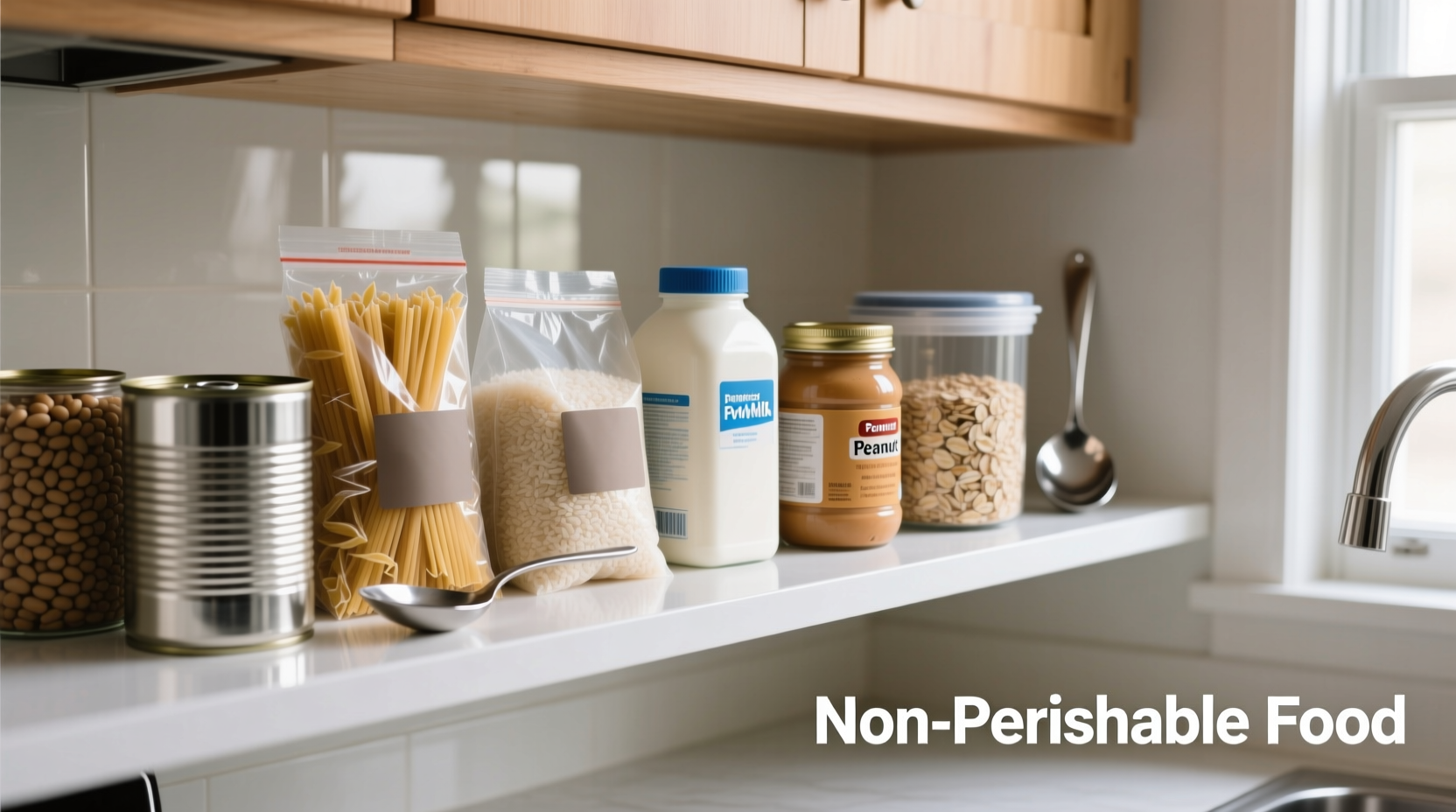Understanding what qualifies as non perishable food is essential for emergency preparedness, budget-conscious shopping, and efficient pantry management. In this comprehensive guide, you'll discover exactly which foods qualify as non perishable, their realistic shelf lives, optimal storage conditions, and practical strategies for building a reliable food supply that won't spoil unexpectedly.
Defining Non Perishable Food: Beyond the Basics
While many people assume non perishable means "lasts forever," the reality is more nuanced. Non perishable foods maintain safety and quality for extended periods under proper storage conditions, but they don't last indefinitely. The key factors that make food non perishable include:
- Low moisture content - Bacteria and mold require water to grow
- Acidic environment - Low pH inhibits microbial growth
- Preservation methods - Canning, drying, freeze-drying, or chemical preservatives
- Protective packaging - Airtight containers prevent contamination
According to the USDA Food Safety and Inspection Service, properly processed and stored non perishable foods remain safe indefinitely, though quality may decline over time. The "best by" dates on packaging typically indicate peak quality rather than safety concerns.
Types of Non Perishable Food: A Practical Classification
Non perishable foods fall into several categories based on their preservation method and composition. Understanding these distinctions helps you make informed choices for your pantry.
| Food Category | Examples | Typical Shelf Life | Storage Requirements |
|---|---|---|---|
| Canned Goods | Vegetables, fruits, meats, beans | 2-5 years (acidic), 4-6 years (low-acid) | Cool, dry place below 75°F (24°C) |
| Dried Foods | Rice, pasta, dried beans, oats | 1-2 years (unopened), 6-12 months (opened) | Airtight containers, away from moisture |
| Freeze-Dried | Fruits, vegetables, complete meals | 25-30 years | Original packaging, cool dry location |
| Shelf-Stable Staples | Honey, salt, sugar, vinegar | Indefinite (quality may change) | Sealed containers, away from contaminants |
Evolution of Food Preservation: A Historical Perspective
Humans have been preserving food for millennia through natural methods before modern technology. Understanding this timeline provides context for today's non perishable food options:
- Prehistoric Era - Drying and smoking meats and fish
- Ancient Civilizations - Salting, fermenting, and using honey as preservatives
- 1809 - Nicolas Appert develops canning process after Napoleon's prize offer
- 1850s - Commercial canning industry emerges
- Mid-20th Century - Freeze-drying technology developed for military use
- Present Day - Advanced packaging and preservation techniques create longer-lasting options
This historical progression demonstrates how food preservation has evolved from necessity to sophisticated science, making non perishable food more accessible and varied than ever before.
Practical Applications of Non Perishable Food
Knowing what is non perishable food extends beyond theoretical knowledge—it has real-world applications that benefit various aspects of daily life and emergency planning.
Emergency Preparedness Essentials
The Federal Emergency Management Agency (FEMA) recommends maintaining a 14-day supply of non perishable food for emergency situations. Ideal emergency food items include:
- Ready-to-eat canned meats, fruits, and vegetables
- Protein bars and meal replacement shakes
- Bottled water (1 gallon per person per day)
- Manual can opener (don't forget this critical tool!)
Budget-Friendly Pantry Management
Building a strategic non perishable food inventory helps reduce grocery costs through:
- Purchasing staple items in bulk during sales
- Reducing food waste from spoiled perishables
- Creating meal flexibility during busy weeks
- Avoiding expensive last-minute takeout
Storage Guidelines for Maximum Shelf Life
Even the best non perishable food degrades faster under improper conditions. Follow these evidence-based storage recommendations:
- Maintain consistent temperatures below 75°F (24°C)—for every 10°F increase, shelf life decreases by 50%
- Store in dark locations—light accelerates nutrient degradation
- Keep away from moisture sources—humidity causes clumping and mold
- Rotate stock using the "first in, first out" method
- Transfer opened items to airtight containers
The National Center for Home Food Preservation notes that properly stored non perishable foods maintain safety indefinitely, though quality factors like color, texture, and nutrient content gradually decline. For example, canned foods may develop darker color and softer texture over time, but remain safe to eat.

Common Misconceptions About Non Perishable Food
Several myths persist about non perishable food that can lead to poor planning or unnecessary waste:
- Myth: "Non perishable means it never spoils"
- Reality: All food degrades over time—"non perishable" refers to extended shelf life under proper conditions
- Myth: "If the can is dented, the food is unsafe"
- Reality: Minor dents are generally safe; discard cans with deep dents, especially on seams
- Myth: "Expiration dates indicate safety"
- Reality: Most dates indicate peak quality, not safety (except for infant formula)
Building Your Non Perishable Food Supply: A Practical Approach
Creating a functional non perishable food inventory requires strategy, not just stockpiling random items. Follow this systematic approach:
- Assess your needs - Calculate based on household size and intended duration
- Select familiar foods - Choose items your family regularly eats
- Include variety - Different textures, flavors, and meal types prevent menu fatigue
- Consider preparation requirements - Include items needing minimal cooking during emergencies
- Implement a rotation system - Mark purchase dates and use oldest items first
For beginners, start with a 3-day supply focusing on ready-to-eat items, then gradually expand to 14 days or more. The American Red Cross emphasizes that the best emergency food supply consists of items you'll actually eat, not just what's theoretically non perishable.
When Non Perishable Food Isn't the Best Choice
While non perishable food offers many benefits, certain situations call for different approaches:
- Nutritional completeness - Long-term reliance requires careful planning to avoid deficiencies
- Special dietary needs - Some medical conditions require fresh preparation
- Palatability concerns - Extended consumption of only shelf-stable foods affects morale
- Specific emergency scenarios - Power outages may require no-cook options even with non perishable items
A balanced approach combines non perishable staples with some fresh items when possible, creating resilience without sacrificing nutrition or enjoyment.











 浙公网安备
33010002000092号
浙公网安备
33010002000092号 浙B2-20120091-4
浙B2-20120091-4